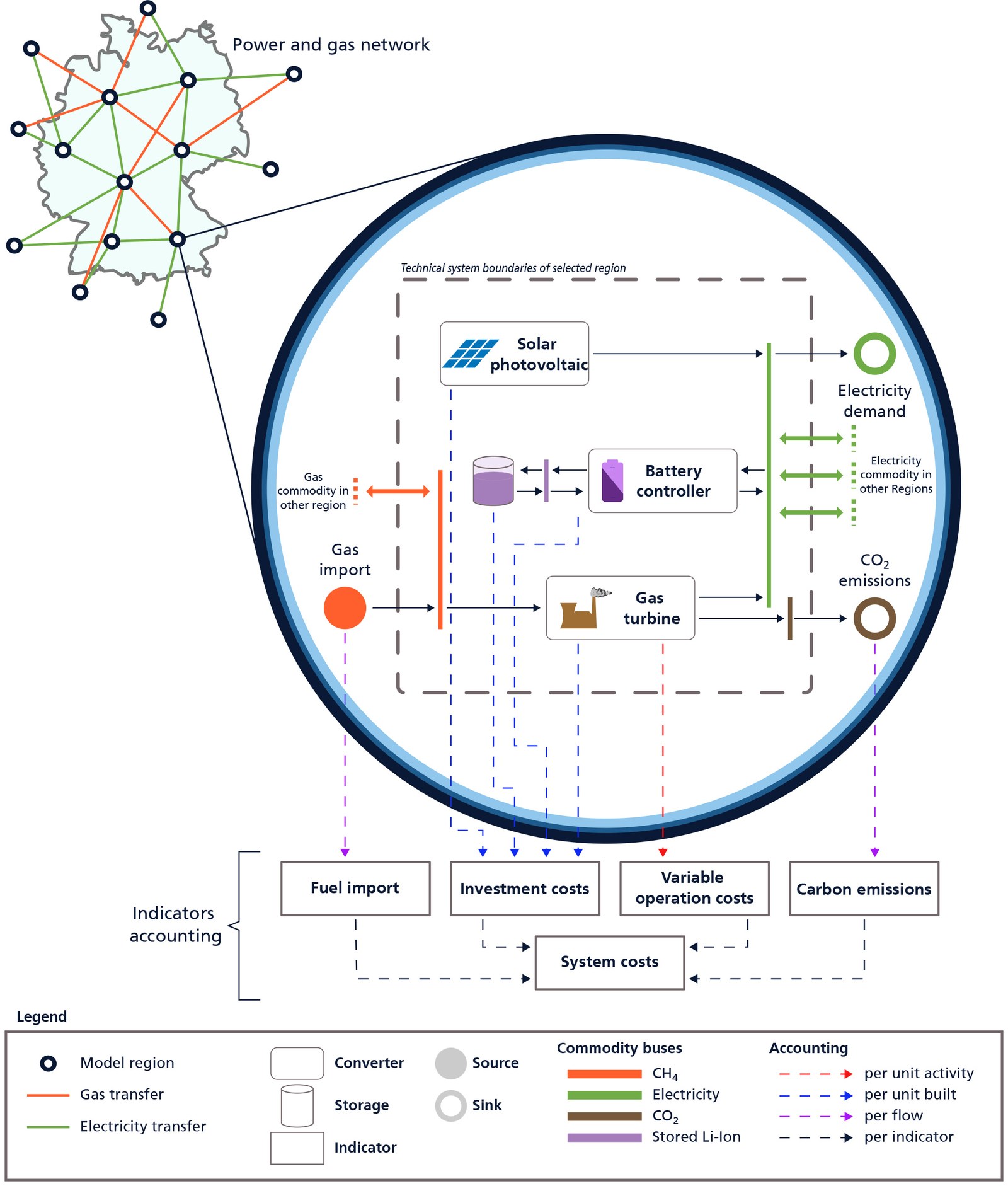Energy System Analysis
The Energy Systems Analysis department generates system-analytical knowledge, which we provide across sectors up to the global level and based in part on methods and modelling tools developed in-house.

The REMIx energy system modelling tool developed at DLR has been available online since September 2023. It takes into account a wide variety of technologies across sectors in order to map future energy systems on a national or international scale and optimise them today. REMix is flexible in terms of the geographical, temporal and technological scope of the system. This makes it possible to develop energy scenarios that can contribute to a more flexible energy system, e.g. through intelligent charging control for electric cars through load distribution.
The energy system optimisation framework REMix (Renewable Energy Mix) has been developed in the DLR Energy System Analysis Department since 2005. Across various sectors, the framework includes diverse technologies for energy conversion, storage and transport. In the case of energy conversion, in addition to electricity and heat generation from renewable and fossil sources, the electricity-based production of synthetic fuels (hydrogen, methane, liquid hydrocarbons) is also mapped. For the temporal decoupling of generation and demand, the framework includes electricity storage, heat storage, fuel storage, load management in households, commerce and industry, as well as the controlled charging and grid feed-in of battery electric vehicles. In addition, energy transport between the model regions via the AC transmission grid, high-voltage DC transmission lines and fuel pipelines is considered in a simplified way.

Considering boundary conditions, such as the development of demand or the flexibility of generators and consumers, REMix can be used to evaluate the interaction between all technologies in hourly resolution and to determine the minimum-cost expansion and operation of the energy supply system under consideration (Figure 1). REMix offers a high degree of flexibility with regard to the geographical, temporal and technological system scope and detail. Thus, systems with several hundred network nodes can be investigated as well as those with over a hundred different technologies. On the temporal level, individual years as well as transformation paths can be optimised. A choice can be made between approaches of perfect or rolling foresight. The energy supply can be secured by specifying plant capacities or by optimising the design of all system components considered in a model-endogenous manner. Required conversion, storage or transmission capacities can thus be determined according to the potentials and system requirements.
Based on the framework, numerous systems with different focuses of the German and European energy system have been modelled and analysed in the past. In addition, models of the energy systems of Australia, Brazil and the Canary Islands, among others, were created with REMix.
The development and application of REMix focuses on the most comprehensive possible representation of sector integration, the resilience and supply security of future supply systems, multi-criteria optimisation and the reduction
of model solution times through the use of parallel solvers and high-performance computers.
More information:
